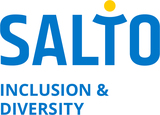Key challenges of working with young ethnic minority women
To support this process there are some fundamentals the worker should be aware of:
There is difference between 'general' youth work and youth work with young ethnic minority women. The most important difference being the role of the family. In some cultures gender roles are quite specifically defined meaning that negotiations and decision making powers rest with the male head of the family. Therefore, negotiating a young woman's participation in a project might well require a series of meetings between a male worker and the young woman's father.
The cultural background of these young women will most probably require single sex activities. If you do not make provisions for this it is more than likely that the parents will not give their permission for the young women to participate.
Young ethnic minority women often experience discrimination from members of the ethnic majority. It may be necessary to identify and address underlying false perceptions and stereotypical views held by young people and adults from the ethnic majority grouping.
Language and literacy skills levels will vary. You should ensure that any learning experiences meet the needs of all participants.
Some may be economically disadvantaged, you may be required to meet travel and transport costs to ensure that they can fully participate in your projects. If this is the case, you should consider making this provision available to all participants to ensure that you do not create an environment that could lead to further discrimination by those who are not financially disadvantaged.
Trust is a key factor when working with these young women. Building trust takes time, patience, energy, negotiation. Building trust is an ongoing and inclusive process, this means keeping all actors informed and involved at all stages of the project, this means regular meetings, phone calls, communication, written and verbal, with both the participants, their parents and other members of their family and community such as religious and community leaders.
^^ top ^^
Projects aiming at empowering women to access opportunities, fundamental rights, and resources might not impact all women in the same way. This means that what empowers "white middle class women" not necessarily works to foster emancipation of marginalised, excluded women from minorities. Therefore aims, objectives, methodologies, projects and policies need to be tailored to the needs of the target group.
One of the barriers which NGOs need to overcome when working with minority women is that very often NGO actors do not belong to the same minority group and therefore they may have a very different "intersectional identity" to the minority woman's one. This "otherness" may create diffidence in the relationship between the NGO and the target group, therefore a main role is played by "gatekeepers" of the NGO and by "cultural mediators" between the NGO and the minority.
The intersectional approach has an impact also on the different steps in the risk management process. For example, NGOs should bear in mind that marginalised minority women run multiple risks when they decide to react to practices and statements of their tradition: the risk of being excluded both from their own community because of their rebellion and, at the same time, from the majority society because of their membership of a discriminated minority group.
It goes without saying that it is extremely important to recognise the multiple discrimination against minority women, to assess their real opportunities and access to rights and to enhance the active participation of stakeholders to the development of the project, in order to release "women at the crossroad of discrimination grounds" from the traffic jam of prejudices and exclusion. "
> Extract from Barbara Bello's paper at: www.salto-youth.net/find-a-tool/945.html
^^ top ^^
Starting from the participant's needs
Involving participant's at the start of your project has two major benefits: one, it will help a worker gain the participant's trust and two, through skills and knowledge gained, it will help improve the confidence and self esteem of all those involved by creating a sense of ownership and responsibility for the planning, implementation and evaluation processes.
A successful project will be dependant on participant's needs being taken into account. A key step in achieving this is Needs Assessment:identifying the needs, hopes and aspirations of participants.
Needs Assessment: key outcomes
- Identify individual and community needs, concerns and issues
- Empower grass-roots action around needs
- Determine if needs have changed
- Gather individual's and communities' hopes, dreams and desires
There are a number of ways a Needs Assessment can be facilitated, these include:
- Focus Group Interview
- Public Issues Fora
- Secondary Data Analysis
- Surveys and Questionnaire
- Interviews
- Mapping
^^ top ^^
All of the above methods are useful as a means to gathering information. However, in considering Hart's Ladder of Participation, in terms of maximum participation (and therefore a high sense of ownership and control of the process) Mapping (also known as Participatory Action Research) is recommended as the method most likely to put participants at the heart of the process.
Participatory action research is based on a view that people are the experts on their own lives and therefore they are the best starting point for any planning or action process.
The approach aims to include members of society that are often excluded from decision making processes; young people, minority ethnic groups, people with special needs, people from the most disadvantaged areas (rural and urban).
Participatory action research is a key first step in planning for change.
- It allows contrasting views and individual values to be discussed and does not set "quantity" as the only positive outcome or indicator of performance or success.
- It seeks diversity, recognising that people's lives and ideas are different and complex.
- It encourages group work to enable discussion and expressions of difference.
- It empowers people to control the process and set their own agenda.
> Adapted from: Susman, G. I., "Action Research: A Sociotechnical Systems Perspective," ed. G. Morgan (London: Sage Publications, 1983) 102.
Participatory action research has three key stages:
- Identifying or defining the problem or need - mapping
- Considering and taking action to address the problem or need - action
- Evaluating the outcomes (learning and development) of the action taken to address the problem or need - evaluation
As you can see from the diagram it is a continuous process, according to the situation individual's needs and desires change. To be effective you will need to return to the process throughout your project.
> Want to know more? For further information and a step by step guide, click here.
^^ top ^^

